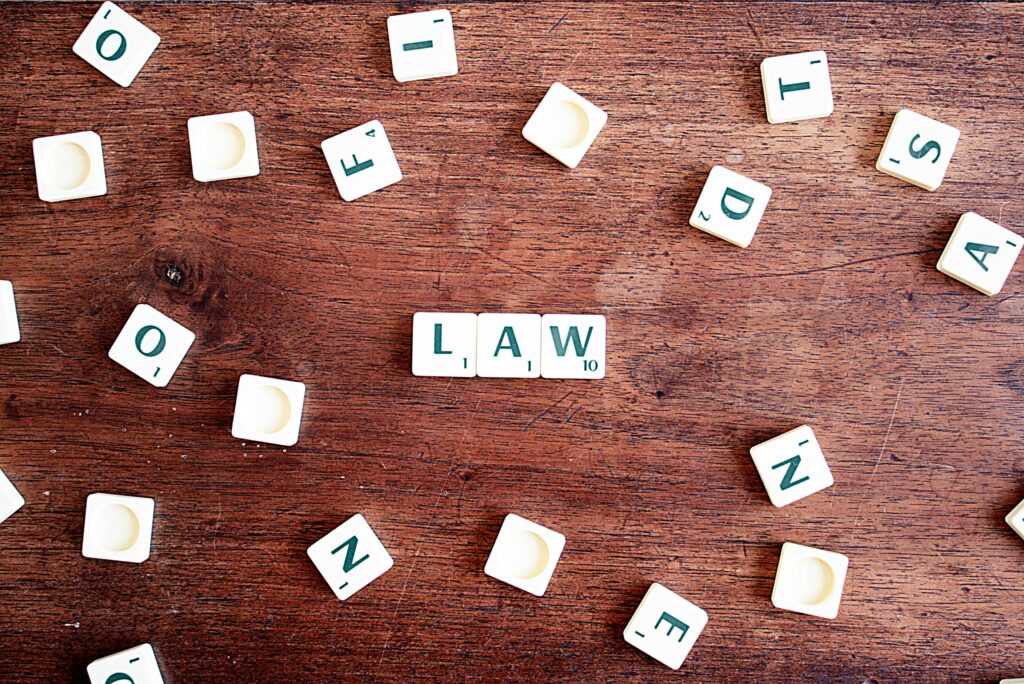Published on: 10th October 2025
Authored by: Nyasha Kaushik
SKJ LAW COLLEGE, MUZAFFARPUR, BIHAR
INTRODUCTION
Custodial death means death of a person in police or judicial custody. It represents a grave violation of human rights. In a democratic society like India, where the rule of law prevails, such deaths raise serious concerns about abuse of power, lack of transparency, and failure of accountability mechanisms. Despite constitutional safeguards and international commitments, custodial deaths continue to occur at an alarming rate, often going unpunished or inadequately addressed.
Custodial deaths can be generally classified into two categories:
1. Police Custody Deaths: These occur when an individual is held by the police during an investigation or interrogation.
2. Judicial Custody Deaths: These take place in prisons or other correctional institutions under judicial directives.
Although certain custodial deaths may result from natural causes or suicide, a significant number stem from torture, mistreatment, or negligence by law enforcement personnel.
Legal Framework in India
India possesses various legal measures aimed at preventing and penalizing custodial deaths. These measures encompass constitutional guarantees, statutory provisions, and international obligations.
A. Constitutional Provisions
Article 21 : Ensures the right to life and personal liberty. The Supreme Court has broadened its interpretation to encompass protection against torture and inhumane treatment.
Article 20(3) : Safeguards against self-incrimination, ensuring that no individual accused of a crime shall be forced to testify against themselves.
Article 22 : Offers protection concerning arrest and detention in specific circumstances.
B. Indian Penal Code (IPC), 1860
Section 302: Prescribes punishment for murder – relevant to custodial deaths that arise from intentional actions.
Section 304: Prescribes punishment for culpable homicide that does not amount to murder.
Sections 330 and 331: Prescribe punishment for inflicting hurt and grievous hurt to extract confessions.
Section 376(2)(a): Prescribes punishment for custodial rape.
C. Criminal Procedure Code (CrPC), 1973
Section 176(1A): Requires a judicial inquiry in instances of custodial deaths.
Sections 41 and 41A: Establish procedures for arrest and protective measures.
D. Protection of Human Rights Act, 1993
This act created the National Human Rights Commission (NHRC) to examine human rights violations, including custodial deaths. The NHRC guidelines stipulate that all instances of custodial death must be reported within 24 hours.
E. Evidence Act, 1872
Section 114-B: Assumes the guilt of police officers in situations where an individual in custody suffers injuries, unless proven otherwise.
Custodial deaths in India may refer to the deaths in police custody and also to the deaths of persons in judicial custody while undergoing trial or serving a sentence. In the financial year 2021–22, the National Human Rights Commission of India reported 2152 deaths had occurred in judicial custody and 155 deaths had occurred in police custody till 28 February 2022. According to a report released by National Campaign Against Torture (NCAT), there were 1606 deaths in 2019 which occurred in judicial custody and 125 death occurred in police custody. On 26 July 2022, while answering a question in the Lok Sabha Union Minister of State for Home Affairs Nityanand Rai revealed that 4484 cases of custodial deaths were reported in India during the period FY 2020-21 to FY 2021-22
Accountability in Custodial Deaths:
Ensuring accountability in instances of custodial deaths is crucial for maintaining the rule of law and respecting human rights. Nevertheless, India’s performance in this domain has been inadequate and inconsistent, primarily due to systemic shortcomings.
1. Criminal Accountability of Officials
Rare Prosecutions: In spite of numerous reported custodial deaths, only a small number of police officers face prosecution or conviction.
Legal Hurdles:
Section 197 of the CrPC necessitates prior approval from the government to prosecute public servants, which frequently results in delays or the denial of justice.
The absence of direct evidence, as police officials often manipulate records or classify custodial deaths as suicides or illnesses.
2. Departmental Accountability
Internal investigations are frequently cursory and lack independence.
Officers may experience transfers or suspensions, but seldom face dismissal or criminal charges.
3. State Responsibility
The Supreme Court, in the case of Nilabati Behera v. State of Orissa (1993) , determined that the State is accountable for breaches of fundamental rights under Article 21.
4. Role of Oversight Bodies
The NHRC and SHRCs are involved in recommending actions, yet they possess no binding authority.
Police Complaint Authorities (PCAs), established by the Supreme Court in the Prakash Singh case , are not fully operational in numerous states.
Who Will Assume Responsibility for Custodial Deaths in India?
Custodial deaths do not happen in isolation — they are the culmination of a series of failures and intentional silences at every tier of the criminal justice system. While it may be easy to hold the lower-ranking police constable or sub-inspector accountable for employing third-degree tactics or excessive force, the more profound issue resides in the systemic culture of impunity that shields such actions. Frequently, there is a lack of independent investigation, inadequate documentation of arrests, and insufficient follow-up by supervisory officers. The departmental inquiries, if conducted, are typically superficial and seldom result in prosecution or dismissal. In many instances, Section 197 of the CrPC, which necessitates prior government approval to prosecute public servants, serves as a convenient barrier, postponing or entirely obstructing justice.
Accountability should not be perceived solely in terms of individual wrongdoing but also as institutional and constitutional obligation. The State, as mandated by the Constitution of India, is responsible for safeguarding the life and liberty of every individual, including those in its custody. A custodial death is not merely a failure of law and order; it constitutes a breach of Article 21 — the right to life with dignity. When an individual dies in custody, it signifies the failure of numerous stakeholders: the police, for perpetrating violence; the judiciary, for inadequately enforcing protective measures; the political executive, for neglecting to implement police reforms; and the legislature, for failing to enact a comprehensive anti-torture law despite international obligations.
Police Complaints Authorities, established by the Supreme Court in the Prakash Singh case , are not fully functional or independent in numerous states, which further undermines the oversight mechanism.
Consequently, the question of who should bear accountability cannot be placed on a single individual or office. It must be a collective responsibility shared by the State as a whole — from the arresting officer to the highest echelons of government. Accountability must entail:
– Prompt prosecution of the offenders.
– Holding superior officers accountable for failures in command.
– Conducting judicial inquiries and ensuring transparent post-mortem examinations.
– Assigning political responsibility when reforms are overlooked or undermined.
– And above all, guaranteeing reparative justice for the families of victims.
Role of NHRC:
The National Human Rights Commission (NHRC) is instrumental in addressing and overseeing custodial deaths in India. Its responsibilities encompass:
1. Mandatory Reporting
According to NHRC guidelines, all custodial deaths, whether police or judicial, must be reported by the relevant authority within 24 hours.
Failure to comply is regarded as a significant violation and may lead to repercussions.
2. Independent Investigation
The NHRC has the authority to mandate independent investigations, either through its own team or by requesting a magisterial or judicial inquiry.
In particularly sensitive cases, the NHRC dispatches its own investigation officers to conduct on-site inquiries.
3. Recommendations
Following an investigation, the NHRC is empowered to:
Recommend financial compensation for the family of the victim.
Advise on departmental actions or criminal prosecutions against negligent officials.
Suggest systemic reforms aimed at preventing future occurrences.
4. Monitoring Compliance
The NHRC actively seeks action taken reports from the relevant authorities.
Although it lacks the power to enforce its recommendations, persistent non-compliance can be brought to the attention of Parliament or public forums.
5. Advocacy and Guidelines
The NHRC formulates guidelines concerning arrest, interrogation, detention, and prison conditions.
It also organizes training sessions and workshops to raise awareness among police and prison personnel.
Reforms to Prevent Custodial Deaths
Reform is essential to change India’s custodial justice system from one characterized by impunity to one based on accountability. Some key reforms include:
1. Legislative Reforms
Establish a comprehensive anti-torture law that aligns with the UN Convention Against Torture (UNCAT).
Revise Section 197 of the CrPC to eliminate the requirement for prior sanction in cases of custodial deaths.
2. Police Reforms
Execute the Supreme Court directives from Prakash Singh v. Union of India (2006):
Create independent Police Complaints Authorities (PCAs) at both state and district levels.
Guarantee transparent appointment processes and fixed tenures for police personnel.
Distinguish law enforcement duties from investigative responsibilities.
3. Technological Safeguards
Install CCTV systems with audio capabilities in all police stations and detention facilities, overseen by independent organizations.
Digitize records of arrests and interrogations to minimize the potential for manipulation.
4. Judicial and Procedural Reforms
Mandate and time-bound judicial inquiries under Section 176(1A) of the CrPC for all custodial deaths.
Establish fast-track courts specifically for the prosecution of custodial violence cases.
Ensure independent forensic and medical examinations, including videographed autopsies.
5. Legal Aid and Awareness
Guarantee legal assistance to all detainees, particularly those from marginalized groups.
Inform citizens about their rights during arrest and detention, including through public awareness campaigns.
D.K. Basu v. State of West Bengal (1997) AIR 1997 SC 610
The D.K. Basu case is a landmark judgment by the Supreme Court of India that laid down detailed guidelines to prevent custodial torture and deaths. The case arose from a letter written by Dr. D.K. Basu, then Executive Chairman of Legal Aid Services, West Bengal, to the Supreme Court highlighting increasing incidents of custodial deaths and police brutality.
Key Issues:
● Widespread incidents of custodial violence and deaths.
● Lack of specific procedural safeguards during arrest and detention.
● Failure of existing legal provisions to protect the rights of detainees.
Judgment:
The Supreme Court held that custodial violence and torture violate Article 21 of the Constitution — the right to life and personal liberty — and must be curbed through judicially enforceable guidelines.
The Court emphasized:
“Custodial torture is a naked violation of human dignity and degradation which destroys, to a very large extent, the individual personality. It is a calculated assault on human dignity and whenever human dignity is wounded, civilization takes a step backward.”
Guidelines Issued by the Supreme Court:
The Court laid down 11 mandatory guidelines to be followed during arrest and detention:
1. Police must wear accurate identification and name tags with designations.
2. Arrest memo must be prepared at the time of arrest, signed by a witness and the arrestee, with time and date.
3. The arrestee has the right to inform a friend or relative about the arrest.
4. The time, place of arrest and the name of the friend/relative informed must be noted in the arrest memo.
5. The arrestee must be medically examined by a doctor every 48 hours during custody.
6. Inspection memo must be prepared recording any injuries at the time of arrest.
7. The arrestee should be produced before a Magistrate within 24 hours, as per Section 57 CrPC.
8. Copies of documents (arrest memo, inspection memo, etc.) must be sent to the Magistrate.
9. The arresting officer must inform the police control room (PCR), and details should be displayed on a notice board.
10. A diary entry must be made in the police station regarding the arrest and the person informed.
11. Legal aid should be provided to the arrestee.
Significance:
● The guidelines were to be treated as law under Article 141 of the Constitution until appropriate legislation was passed.
● It created a judicially enforceable framework to curb custodial abuse.
● The judgment is frequently cited in human rights and criminal law cases.
Impact:
● It led to greater awareness of custodial rights.
● Police reforms and training programs began to incorporate these principles.
1.Nilabati Behera v. State of Orissa (1993) AIR 1993 SC 1960
Significance:
● The Supreme Court awarded compensation to the mother of a young boy who died in police custody.
● It held that public law remedy under Article 32 and 226 can be invoked for compensation in cases of gross human rights violations, irrespective of private law remedies.
● Reaffirmed that custodial deaths violate Article 21 of the Constitution.
2. State of Andhra Pradesh v. Challa Ramakrishna Reddy (2000) 5 SCC 712
Significance:
● The Court held that even a convict does not lose his fundamental rights, including the right to life.
● The State was held liable for the death of an undertrial prisoner due to negligence.
● Compensation was ordered, reinforcing the State’s vicarious liability in custodial deaths.
3. In Re: Death of 31 Prisoners in Bihar (1998) 4 SCC 154
Facts:
● 31 prisoners died of starvation and negligence in Bhagalpur Jail, Bihar.
● The Supreme Court took suo motu cognizance and condemned the failure of prison authorities.
● Ordered detailed prison reforms and better food and health monitoring systems.4. Shakila Abdul Gafar Khan v. Vasant Raghunath Dhoble (2003) 7 SCC 749
Facts:
● A young man died after being taken into custody by the Mumbai Police.
● The Supreme Court criticized the delayed FIR, missing arrest records, and lack of evidence preservation.
● Ordered compensation and criminal action against responsible officers.
CONCLUSION
Custodial death is not merely an act of individual cruelty, it constitutes a serious infringement of human rights and constitutional protections, particularly the right to life and dignity as enshrined in Article 21. This issue highlights a profound systemic failure within the criminal justice system, where torture is often accepted, accountability is sidestepped, and victims frequently find themselves denied justice due to their marginalized positions. In spite of numerous landmark rulings, statutory safeguards, and the directives established in cases such as D.K. Basu v. State of West Bengal , custodial deaths persist without interruption, frequently cloaked in official silence and distorted narratives.
A true democracy cannot thrive where the State itself acts as a perpetrator, and justice cannot be realized when the system favors the offender over the victim. The eradication of custodial deaths is not simply a legal issue — it is a moral and constitutional obligation that demands immediate action, compassion, and a steadfast commitment to human dignity.



